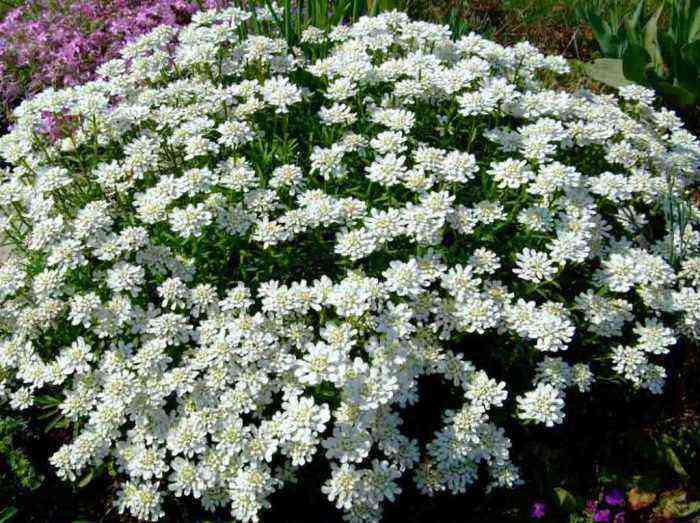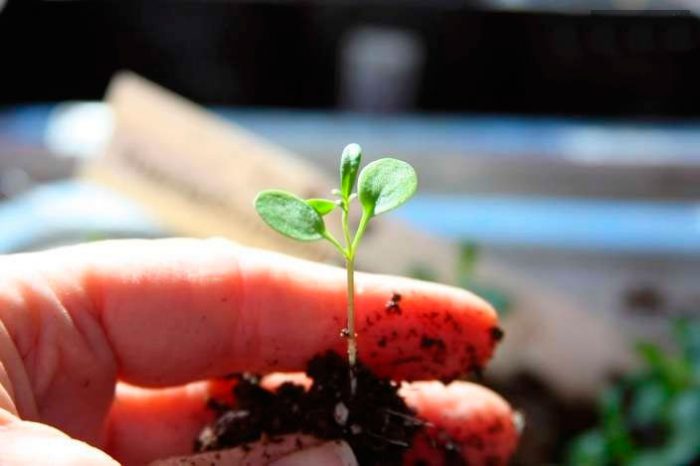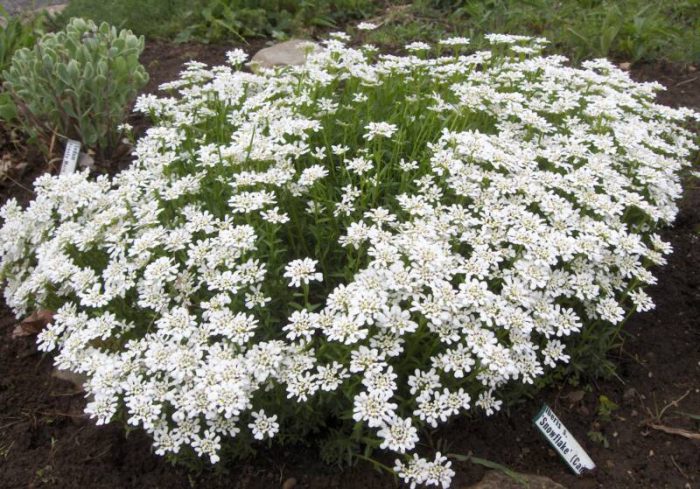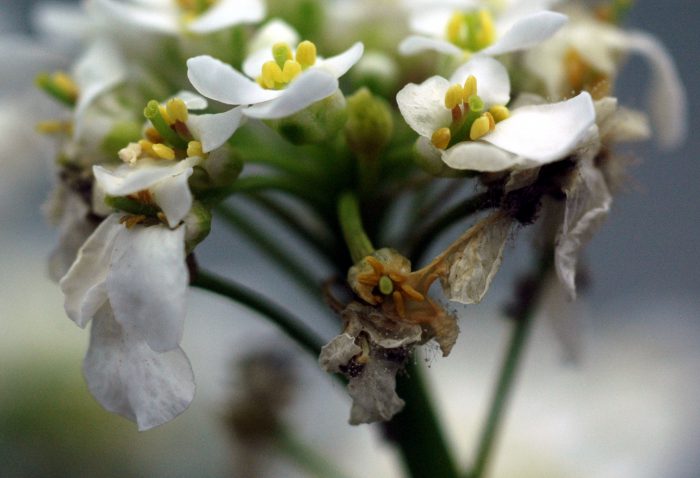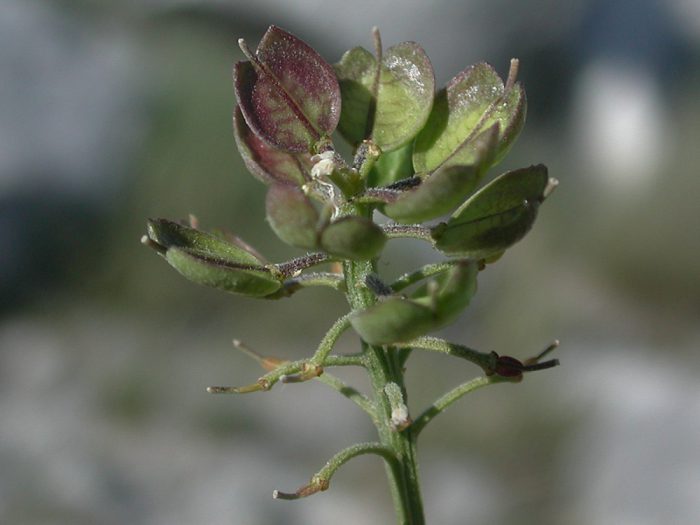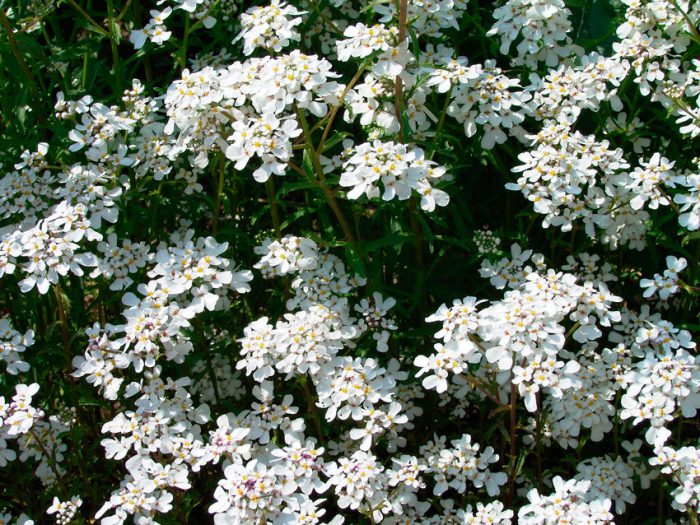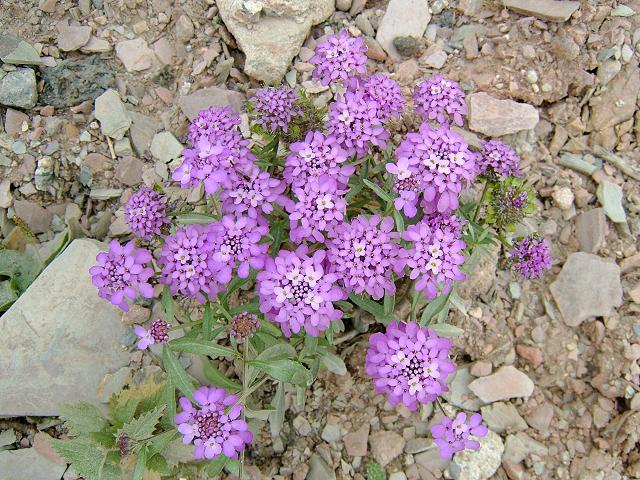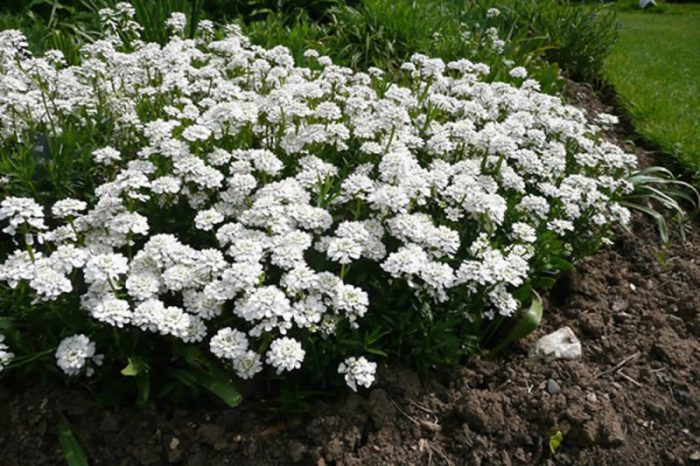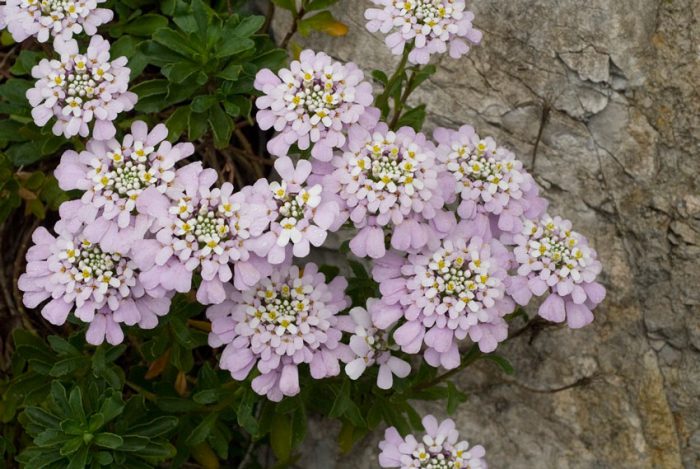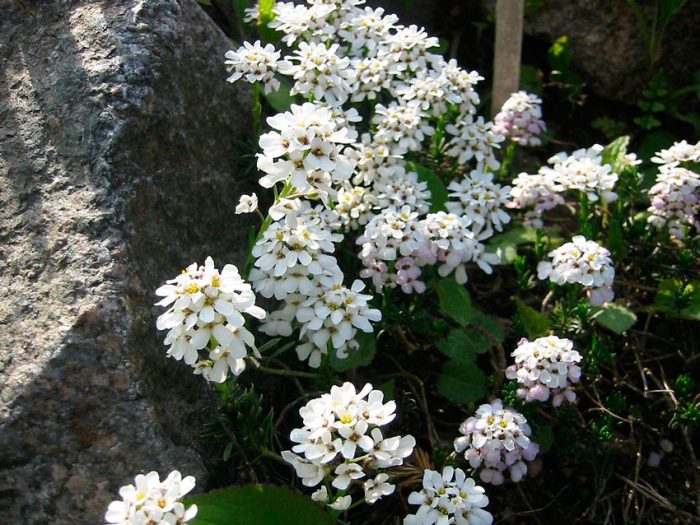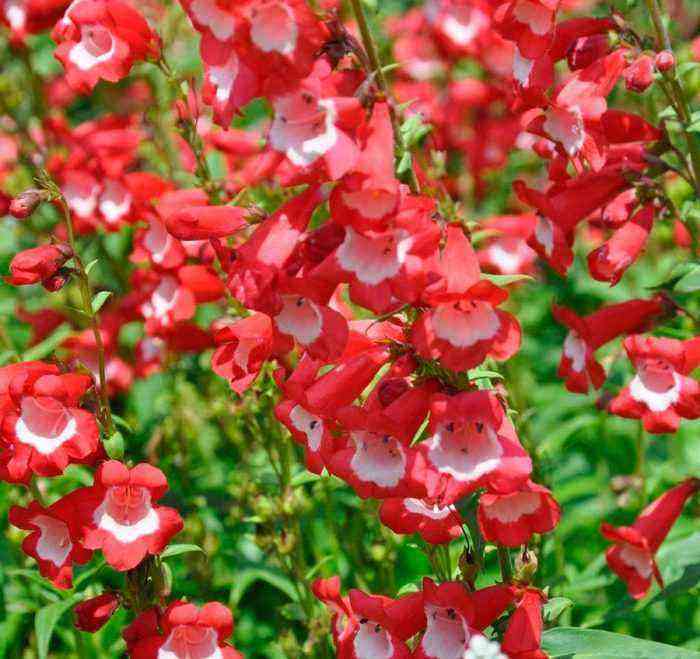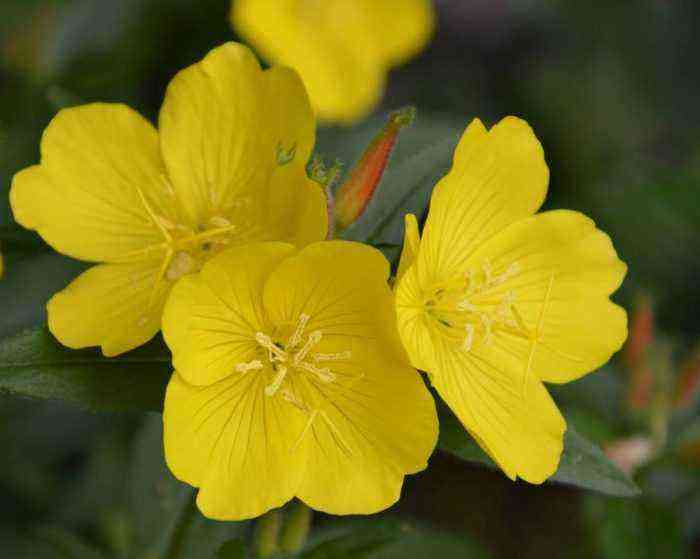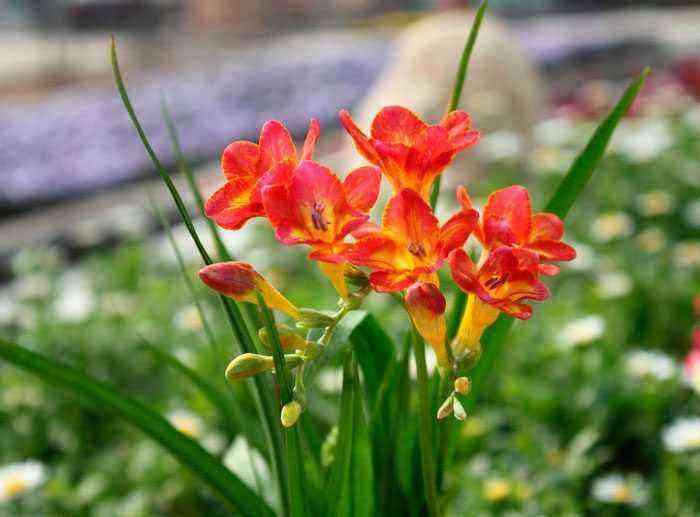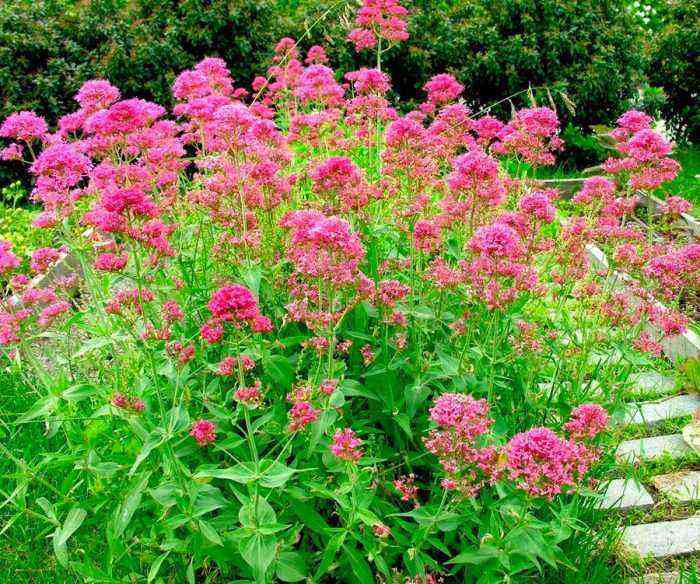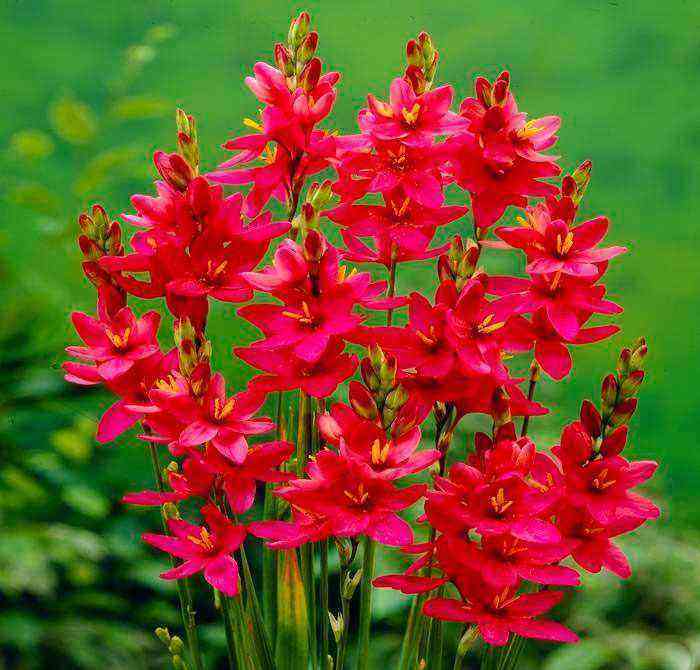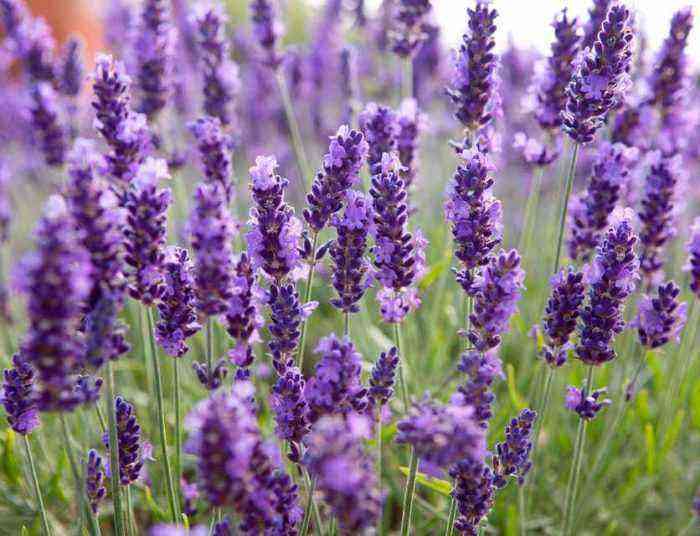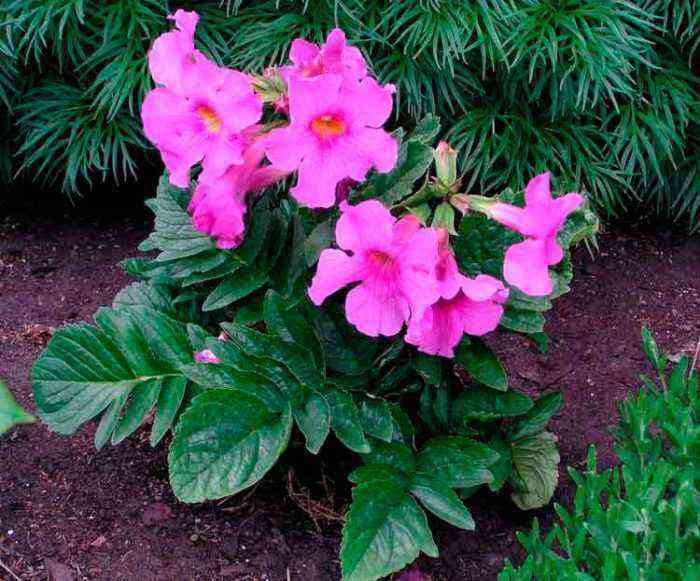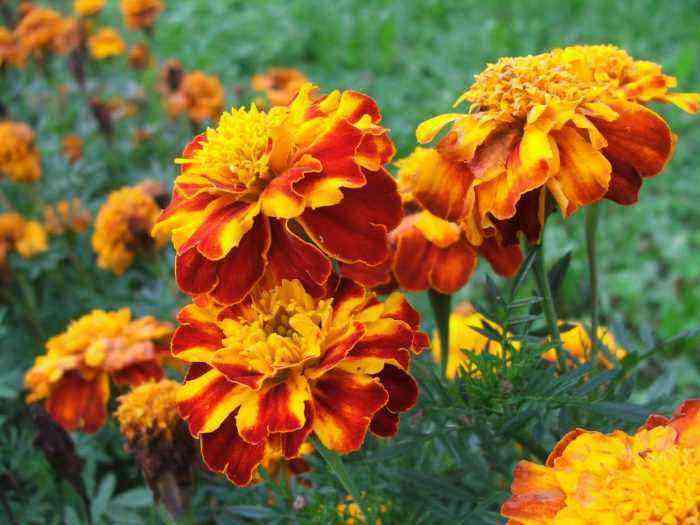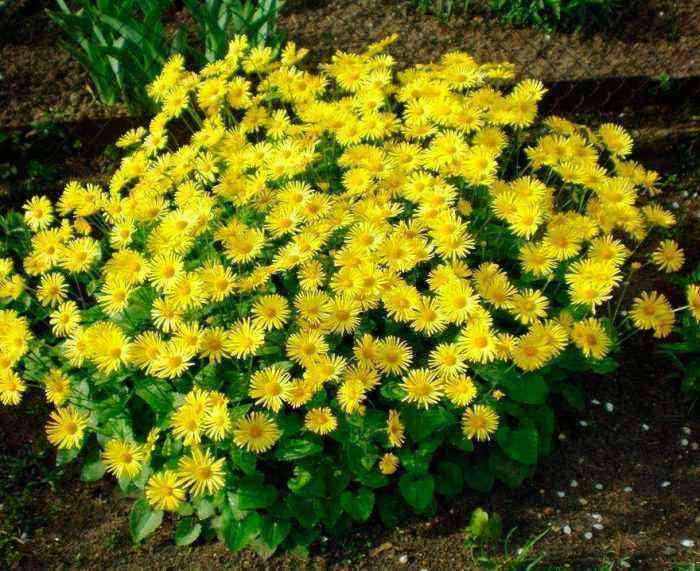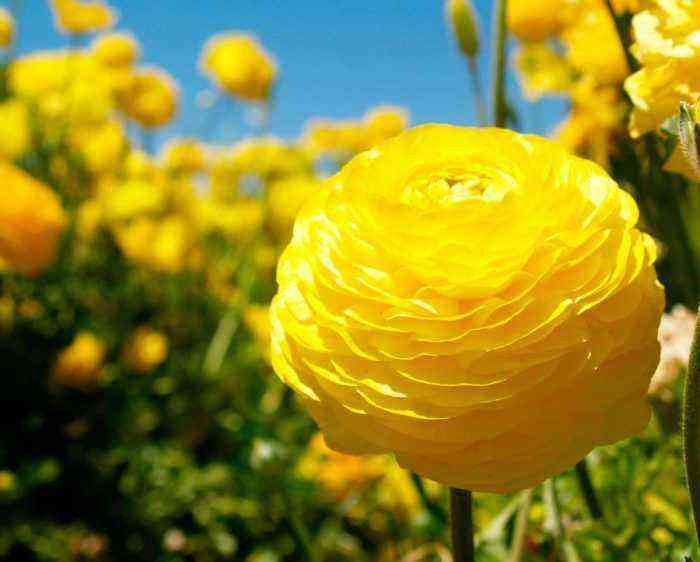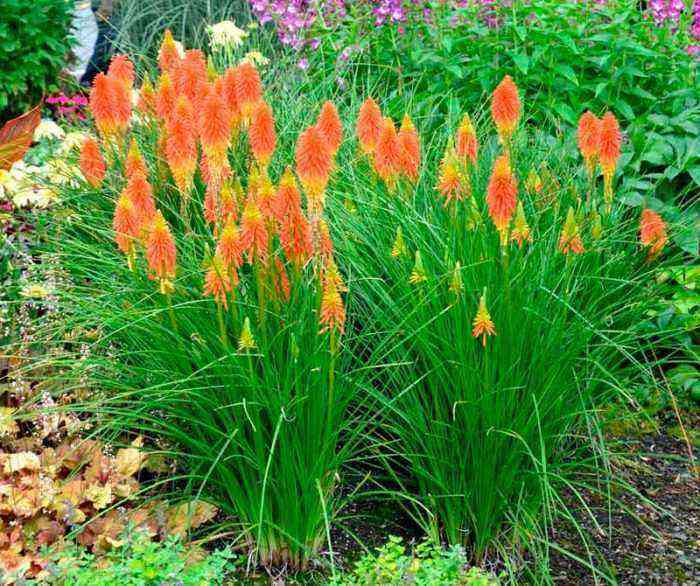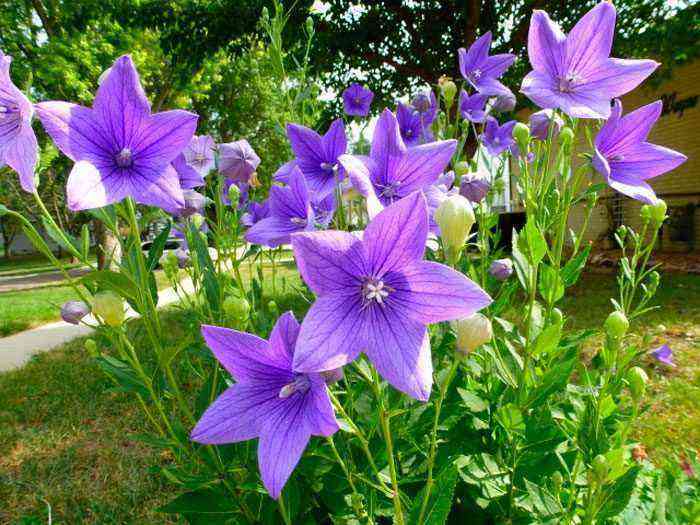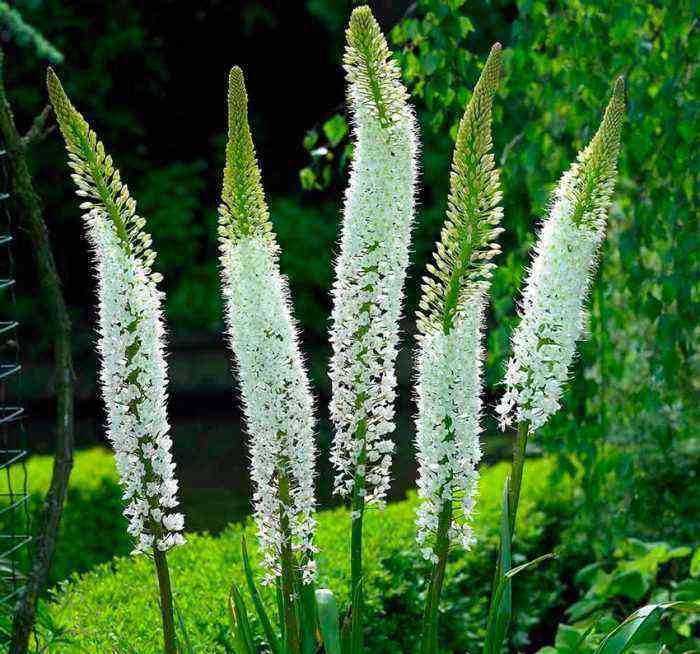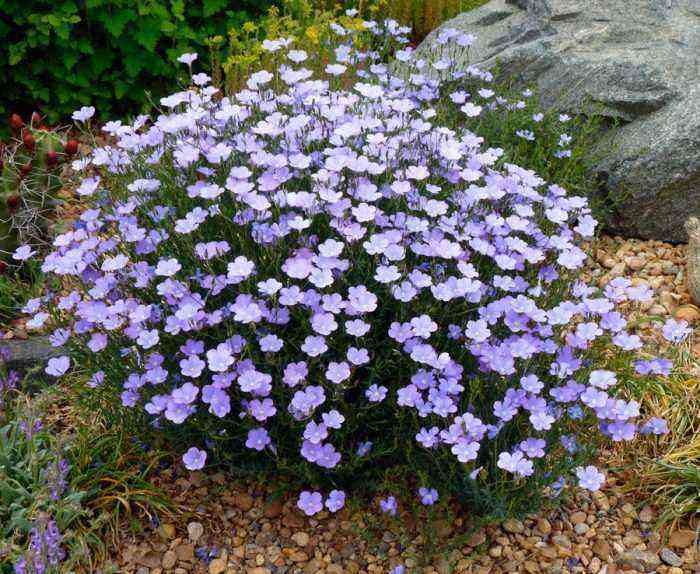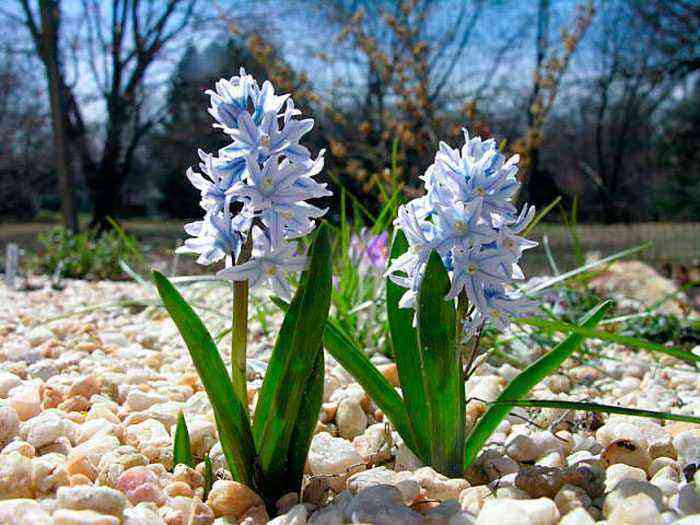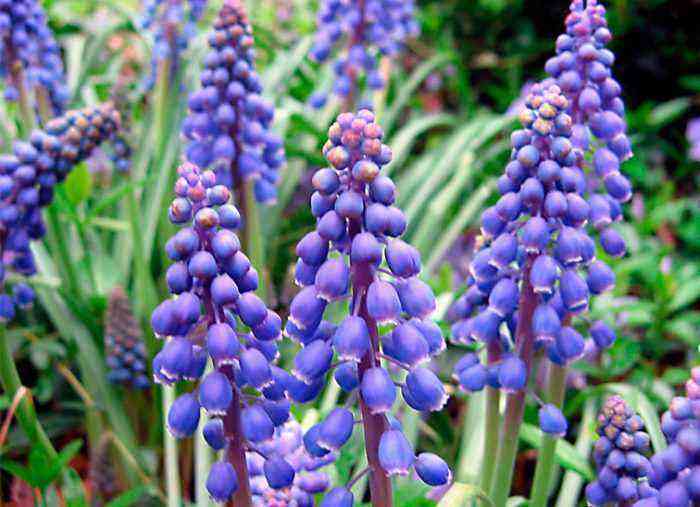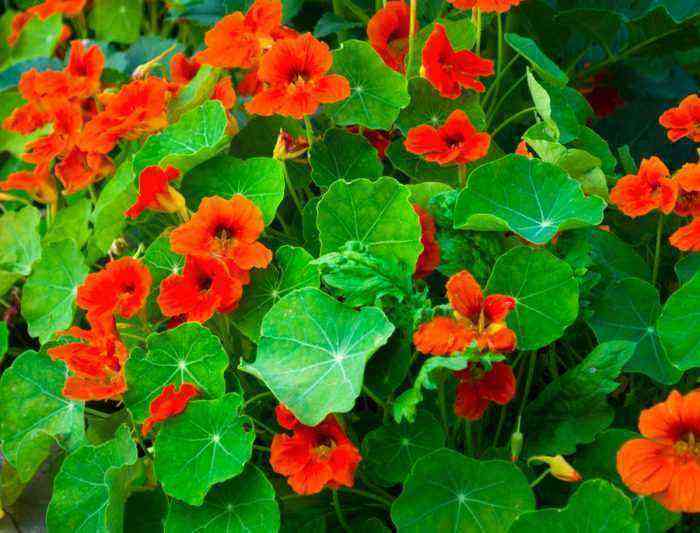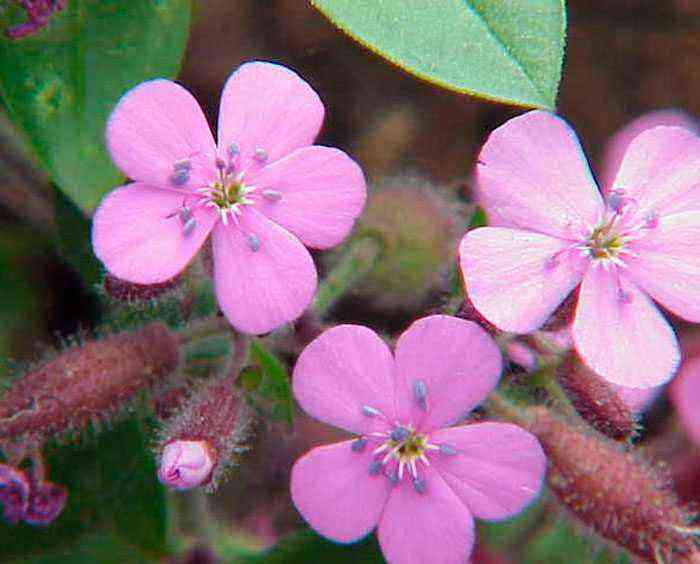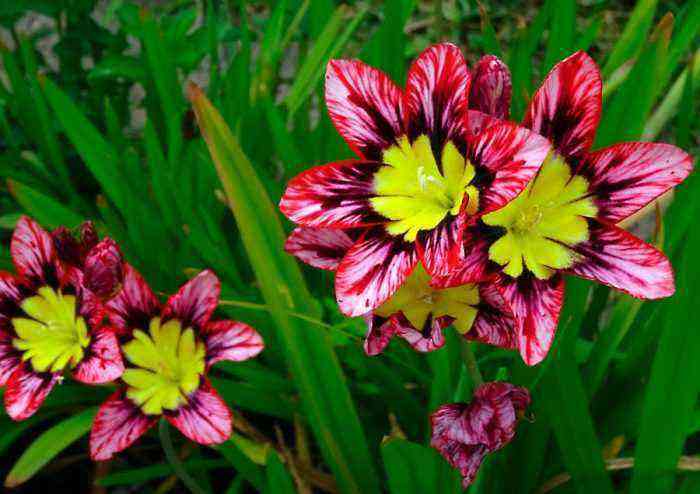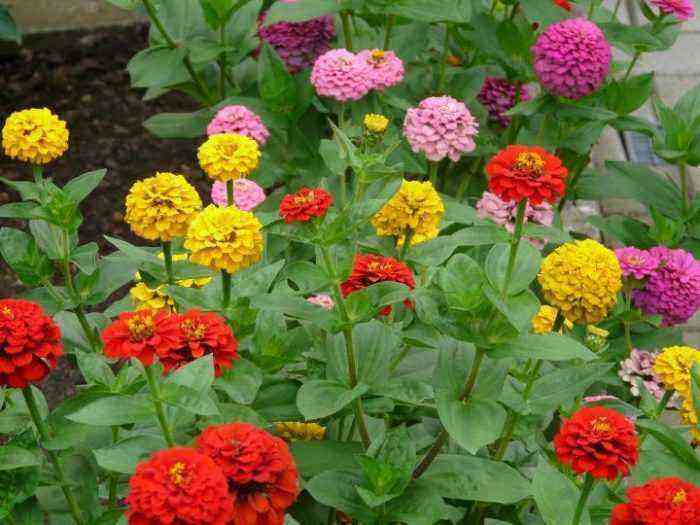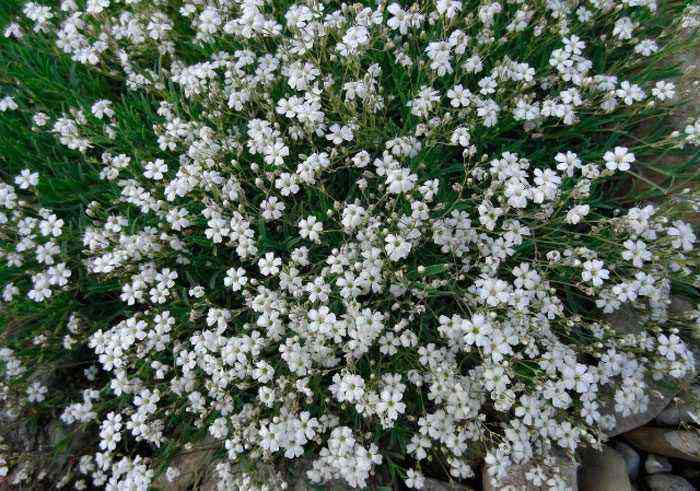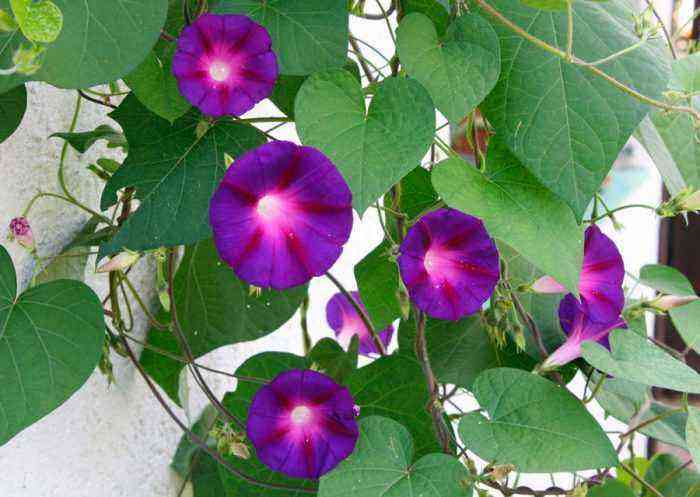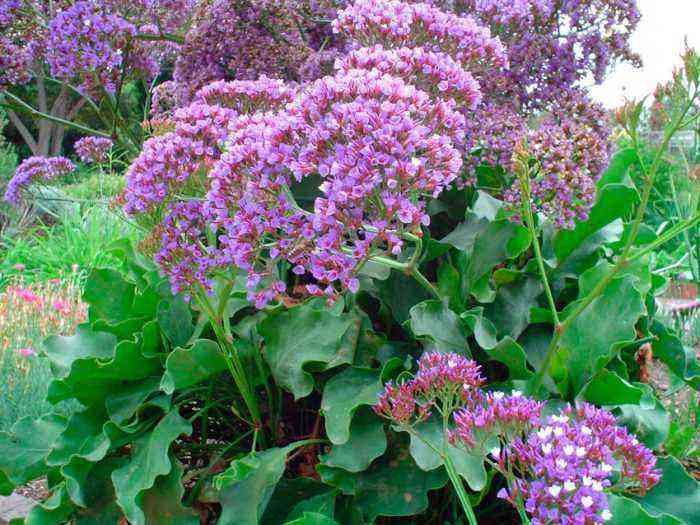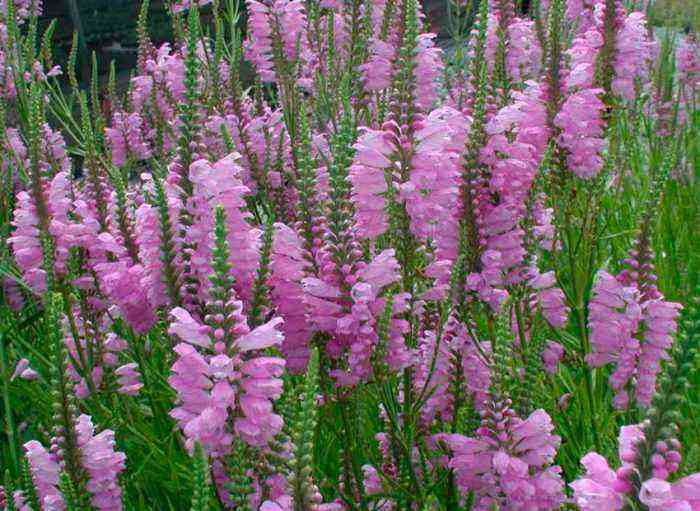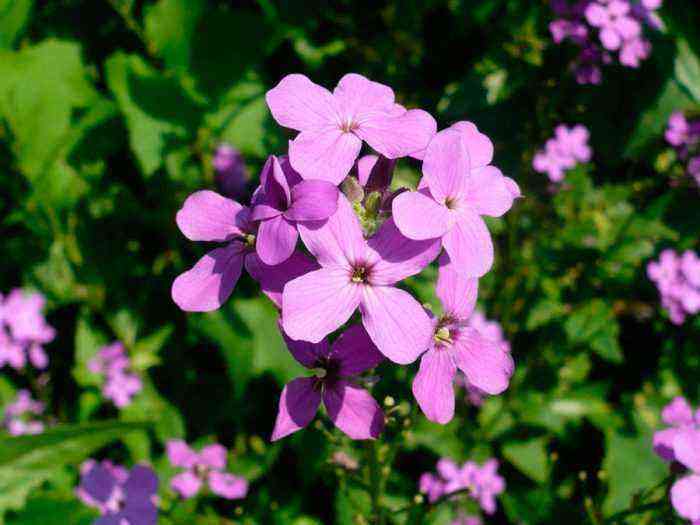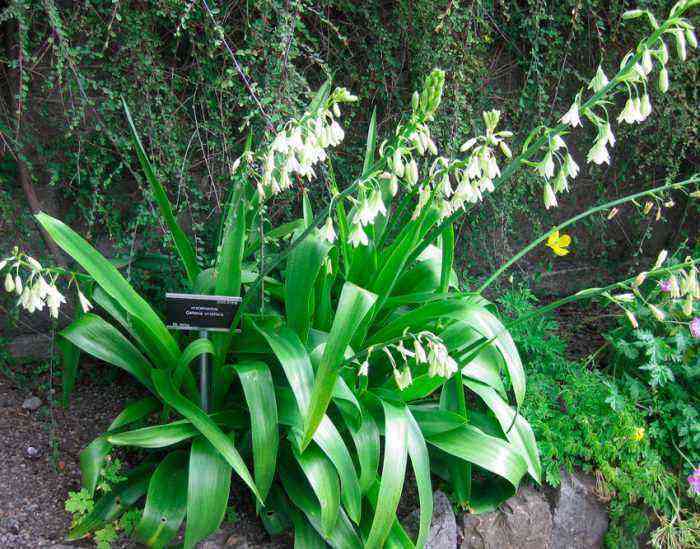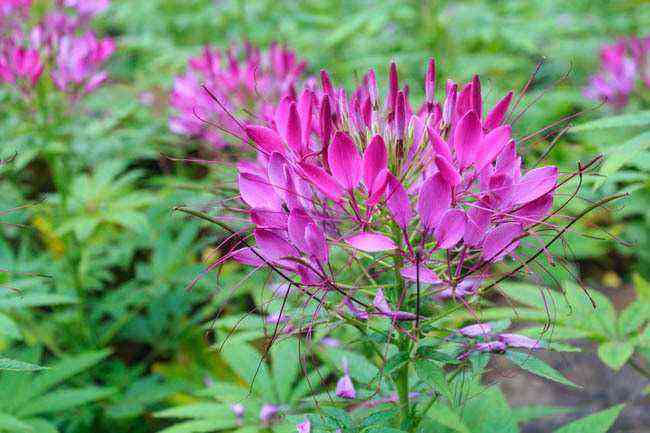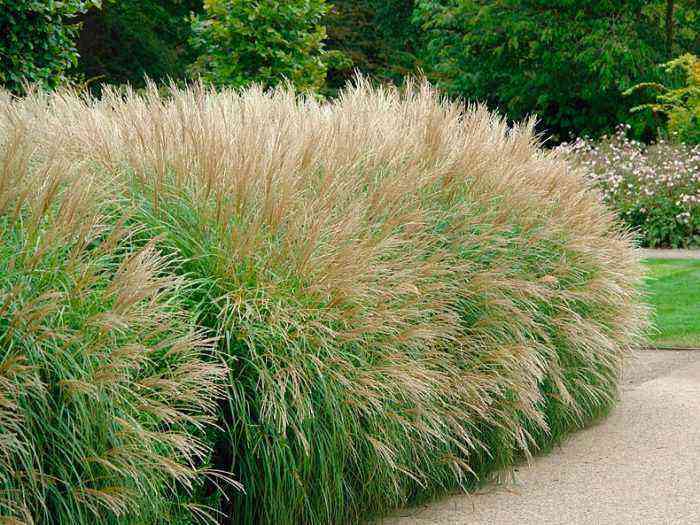Iberis (Iberis), also called Iberian, is a herb that is directly related to the cruciferous or cabbage family. Still such a plant is sometimes called a variegated, stennik or peppercorn. Such a plant in natural conditions can be found in the mountains of southern Europe and Asia Minor, southern Ukraine, the Caucasus, the lower reaches of the Don and in the Crimea. This genus unites about 40 different species, while they are represented by annuals and perennials, which can be thermophilic or frost-resistant, and there are also herbaceous and semi-shrub varieties. Such a plant is often used to create edging of lawns, flower beds, and also to decorate masonry and alpine slides. These flowers are suitable for cutting and are often used to create bridal bouquets.
Features of Iberis
Iberis has a pivotal root system, in this regard, it reacts extremely negatively to transplantation. Depending on the type, the shoots of a given plant can be erect or creeping. Simple small leaves are usually dark green with a tint. The inflorescences are in the shape of an umbrella, and they include small flowers of a centimeter in diameter. Iberis blooms very luxuriantly, while often there are so many flowers that they cover all the leaves. Flowers can be colored pink, lilac, white, lilac or red. Flowering begins in May or August and lasts approximately 8 weeks. Often the flowering of perennials is somewhat shorter than that of annuals. In almost all species, the flowers are quite fragrant. The fruit is a bivalve pod in the shape of an oval or a circle, they are slightly flattened and have a notch at the top. The seeds remain viable for 2–4 years.
Growing Iberis from seeds
Sowing
You can grow this flower from seeds, as well as using a vegetative propagation method. At the same time, the most popular method of propagation by seeds, since they are very easy to purchase in a store or collect. Most species of this plant are sown directly into open soil in April. In order for flowering to last even longer, the seeds must be sown twice with a distance of 15–20 days. The first seedlings will appear after 7-14 days. Seedlings need to be thinned, while the distance between the bushes should be from 12 to 15 centimeters. You can also use sowing before winter.
Seedling
Sowing seeds for seedlings should be done at the beginning of the spring period, while the soil should be loose. It is necessary to deepen the seeds into the ground only 1 mm, sprinkle them on top with a thin layer of river sand. The container must be closed with glass, since the humidity of the air and substrate should be moderate all the time. Move the container to a well-lit and warm place. It is necessary to water the crops only if necessary, and it is imperative to use a sprayer. Diving seedlings is not recommended.
Landing in open soil
What time should you plant
It is necessary to transplant the plant into open soil in the spring, when there is no longer a threat of frost. As a rule, this time falls in May. For planting Iberis, you need to choose a well-lit area with loamy, sandy or rocky soil. It should be borne in mind that the stagnation of fluid in the root system has an extremely negative effect on the plant.
How to land
To begin with, you need to very carefully remove the seedlings from the container, while trying not to injure the roots. It is necessary to take the plant together with a lump of earth. The distance between the bushes should be 12 to 15 centimeters. After planting, the soil around the plant must be tamped, then the bushes are watered. In the event that you are planting various types of Iberis, then very long distances must be made between the bushes, since they can become dusty.
You can also propagate the plant by dividing the bush and cuttings.
Features of care
Growing Iberis is not difficult at all, and even inexperienced gardeners can handle it. Watering should be done only during drought periods. Such flowers can do without feeding, however, for even more lush flowering, Iberis can be fed 1 or 2 times per season with complex fertilizer. In order for the plant to grow and develop normally, it needs to remove fading flowers in time. When the plants bloom, they need to shorten the shoots by 1/3 part, in this case the bushes will look very neat. A perennial plant that has turned 5 years old needs to be planted, otherwise the flowers will become smaller, and the bush will also become less effective.
Diseases and pests
Of the pests, cabbage aphids, mealybugs and earthen fleas can settle on such flowers. So that fleas eating holes in the leaf plates go away, it is recommended to moisten the soil near the bush. To get rid of aphids, you will need to treat the infected flower with a solution of liquid potassium soap (for half a bucket of water, 150-200 g of the substance). If necessary, it will be possible to re-process after 7 days. To get rid of mealybugs, you need to treat the bushes with Mospilan, Actar or Fitoverm. In this case, such processing will need to be carried out one more time in 7-15 days after the first.
The root system of such a plant is susceptible to fungal diseases. For preventive purposes, before planting such a flower, it is necessary to water the area with a fungicidal agent. In the event that the roots begin to rot, then the infected specimens will need to be dug up and burned, and the place where they grew should be disinfected. Such a flower is very resistant to other diseases. If it is watered according to all the rules, then the fungal disease of the Iberis will not be scary.
After flowering
Seed collection
In places where there were flowers, seeds appear. Since flowering lasts quite a long time, the seeds ripen constantly. In this regard, the collection of seeds can be carried out at any time, as soon as they are ripe. To do this, you need to break off the pods and dry them by placing them in a warm place. Seeds extracted from such pods should be stored in a dry and cool place until planting. Collecting seeds can be skipped, since Iberis reproduces well by self-sowing. In springtime, you will see friendly seedlings that will need to be thinned out.
Perennial wintering
Despite the fact that this flower is quite resistant to frost, it is still recommended to cover it, and spruce branches are perfect for this. First, you will need to cut off that part of the bush that is located above the soil surface.
Types and varieties of Iberis with photos and names
Gardeners cultivate only 2 species of annual Iberis.
Iberis bitter (Iberis amara)
This annual can reach a height of about 0,3 meters. On the surface of the shoots branching from the root collar, there is pubescence. The shape of the leaf plates is inverse-lanceolate. Such obtuse alternate leaves have a serrated edge. The color of the flowers, which can reach from 1,5 to 2 centimeters in diameter, can be white or slightly lilac. They are part of racemose inflorescences that have a columnar shape. This species began to be cultivated in the 16th century. Popular varieties:
- Tom Tumb. In height, the bush can reach from 12 to 15 centimeters. The flowers of this species are white.
- Hyacintenblutige Riesen. The height of the bush can reach 0,35 meters. The color of the flowers is lilac.
- Weiss Riesen. The height of the bushes is about 0,3 meters, while the flowers are white.
Iberis umbellata (Iberis umbellata)
This very showy annual plant can grow to about 0,4 meters in height. The branched shoots are glabrous and smooth. Alternately located leaf plates have a lanceolate shape. The highly fragrant flowers can be painted in a wide variety of colors from lilac to white. They are part of the inflorescences, whose shape is corymbose. From the moment of sowing to the beginning of flowering, as a rule, it takes 8-10 weeks. Flowering lasts about 8 weeks. This species has been cultivated since the 16th century. Popular varieties:
- Fairy Mixtche. The bush can have a height of 20 to 25 centimeters. Most often it is represented by a mixture of seeds with different colors.
- Red Rash. The height of the bushes is about 0,3 m. Their flowers are carmine-red.
There are quite popular perennial types of Iberis that are cultivated by gardeners.
Iberis evergreen (Iberis sempervirens)
This semi-shrub plant is a perennial. Its height can vary from 0,3 to 0,4 meters. The length of the oblong leaf plates is about 7 centimeters. Such glossy whole-edged leaves are dark green in color. The diameter of the umbrella-shaped inflorescences is approximately 5 centimeters. And the diameter of white flowers is about 15 mm. It blooms very luxuriantly for 20 days. In some cases, re-flowering is observed in the last summer days. It has been cultivated since the 17th century. Popular varieties:
- Miniature flock. The bush reaches a height of only 15 centimeters. Most often planted on stony masonry.
- Findall. The bush can reach a height of 0,2 m, while the diameter of the curtain is most often 0,8 m.
- Dana. The height of the bushes is about 15 centimeters. It blooms very profusely.
Iberis gibraltar
This species is semi-evergreen. There are many small pink flowers on the bush. The bush reaches 0,4 m in diameter and 0,25 m in height. The most popular variety is Gibraltar Candytaft. On the bush, flowers of a lilac color flaunt, which gradually change it to white.
Iberis Crimean (Iberis simplex)
The height of the bush varies from 5 to 10 centimeters. Greenish-gray spatulate leaf plates have pubescence on their surface. The buds of this species are purple, and the opened flowers are white.
Iberis rocky (Iberis saxatilis)
The height of such an evergreen shrub can vary from 10 to 15 centimeters. They can form dense round curtains. When the plant blooms, the effect is created that it is covered with snow.
